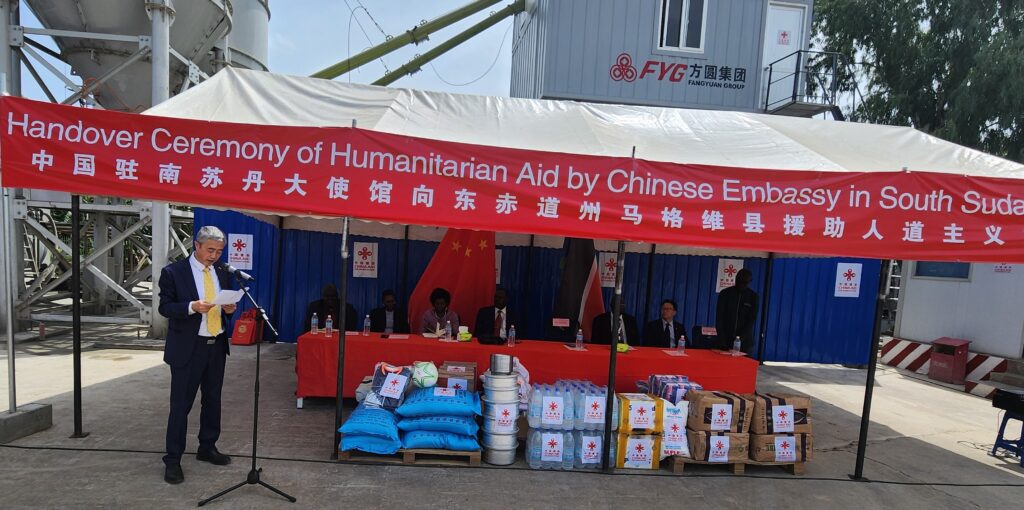The Chinese Embassy in South Sudan on Wednesday delivered food and non-food items to thousands of people displaced by recent violence in Magwi County, Eastern Equatoria state.
The relief targets about 22,000 people who fled to Magwi town in late January following deadly cattle-related clashes. At least 40 people were reported killed in a series of raids involving Dinka Bor herders across five villages, including Agoro, Comboro and Nyolo.
The donated items include rice, wheat flour, sugar, salt, cooking oil, instant noodles, saucepans, stainless steel bowls, sanitary pads, footballs and other supplies.
Betty Achan Ogwaro, a member of South Sudan’s National Transitional Legislative Assembly, thanked China for its swift response during a handover event held in Juba.
“I’m so pleased that the Chinese Embassy was so quick in responding, because this was an emergency — and it is still an emergency,” Ogwaro said.
She added that the donation of footballs could help promote peace through sport, particularly between displaced communities and neighboring groups from Jonglei state.
“The community, after having been in conflict three times with the Jonglei community, has requested footballs so they can begin matches to build peace and understanding,” she said.

Chinese Ambassador Ma Qiang said the assistance reflects ongoing cooperation between China and South Sudan, following a meeting between Chinese President Xi Jinping and South Sudanese President Salva Kiir.
“The aid to Magwi County is a concrete example of building a China–South Sudan community with a shared future,” Ma said.
He noted that China has provided extensive humanitarian support to South Sudan in recent years. In 2024 alone, China donated nearly 1,000 metric tons of emergency food aid and more than 8,800 tents to assist displaced families.
Ma reaffirmed that China remains committed to long-term development in the country, with ongoing investments in training programs and infrastructure projects, including hospitals, bridges and public buildings.




